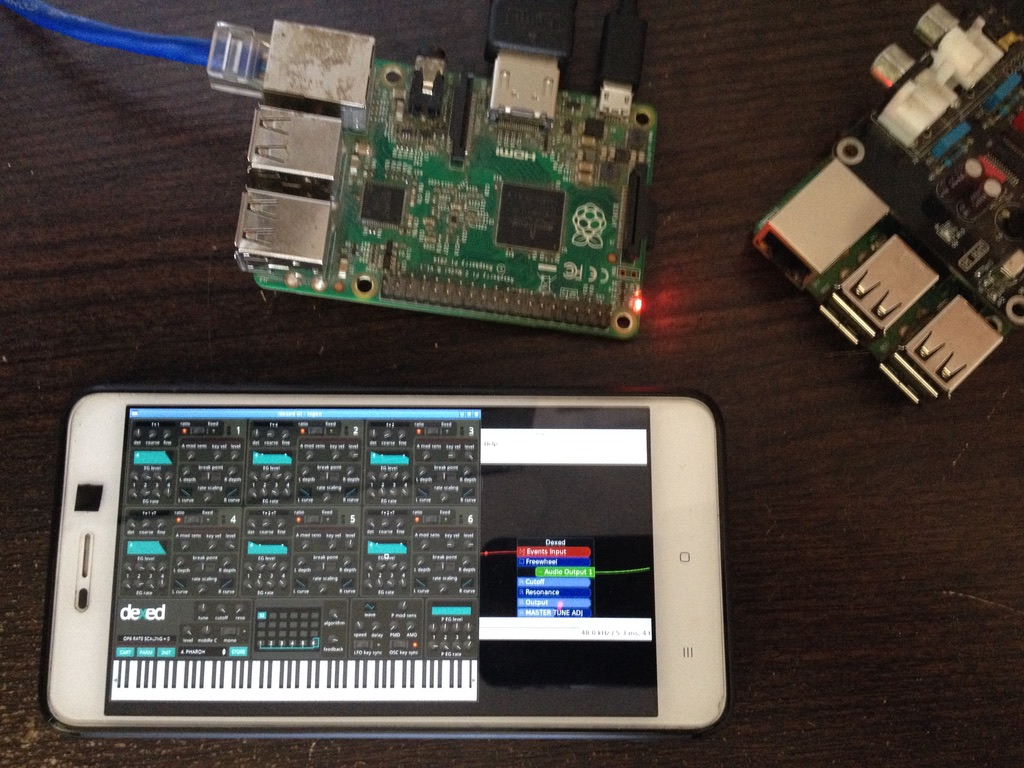Imagine: A dedicated hardware box running your favorite synths, effects, DJ setup, or custom video processing rig. No mouse, no keyboard, no monitor needed. Low-latency DSP power controlled entirely via MIDI or OSC.
Build: Give new life to old computers or utilize budget-friendly Raspberry Pi boards to build you own DSP box. Free and open-source, making powerful DSP accessible to everyone.

Inspired by dedicated hardware like the Muse Receptor, but completely free, open-source, and affordable to build, OpenDSP transforms your old PC or Raspberry Pi into a standalone DSP powerhouse. It's designed from the ground up for performance, stripping away unnecessary overhead to deliver minimal latency for demanding audio and video tasks.
Control everything using the gear you already own – MIDI controllers, tablets, or smartphones running OSC apps.
- Emulate Legends: Run software emulations of classic synths (Yamaha DX7, Moog, Nord Lead, Access Virus, Waldorf), guitar amps (Fender Cabinets), iconic effects (Roland Space Echo, Spring Reverbs), and much more.
- Build Interactive Systems: Program real-time audio-visual experiences using tools like Processing and Puredata in a stable, automated environment perfect for live performance, art installations, or studio work.
Key Features
True Headless Operation
Manage presets, trigger actions, and tweak parameters entirely via MIDI and OSC protocols. No screen, keyboard, or mouse required during performance.
Optimized Low Latency
Built on a lightweight OS with a low-latency kernel. Your CPU power is dedicated to audio and video processing, not background bloat.
Deeply Customizable
Built on Linux and open-source tools. Create custom processing environments ('mods') with simple text configurations. Combine apps freely.
Robust Read-Only OS
Power off safely by simply unplugging – ideal for live gigs and installations. The core OS is protected, preventing data corruption from shutdowns.
Simple Network File Access
Manage samples, presets, and configs easily. OpenDSP automatically shares user data over the network (share name 'opendsp') from Linux, Mac, or Windows.
Optional GUI Access
Need a graphical interface for setup? Access a virtual desktop via any web browser (http://opendsp/) or standard VNC client (opendsp:5900).
Built-in WiFi Hotspot
Plug in a compatible USB WiFi dongle to create a wireless network ('OpenDSP', Pass: opendspd). Connect devices for wireless OSC control.
Dedicated Video Output
Perfect for VJs and visuals. The main display output (HDMI/DVI) is kept free for projection. Manage the system without disrupting the visuals.
Understanding "Mods": Your Custom Setups
OpenDSP uses "mods" – pre-defined configurations that launch and interconnect multiple applications to act as a single, cohesive system (like a virtual effects rack or a complete DJ setup).
- Powerful Automation: Mods define how applications start, connect (audio, MIDI, OSC), and respond to external control signals.
- Headless Control: Load different mods, manage projects within mods, and save your sessions – all via MIDI or OSC commands.
- Simple Configuration: Creating your own mods is straightforward, requiring just text file edits to wire up complex interactions.
OpenDSP in Action: Example Setups
See how OpenDSP can be used to build powerful, dedicated processing rigs:
User Manual
Dive deeper into configuration, available mods, and usage details on our Official Wiki.
Get Involved: Source Code
OpenDSP is an open-source project. Fork the code, contribute your own mods, report issues, and join the development community on GitHub.